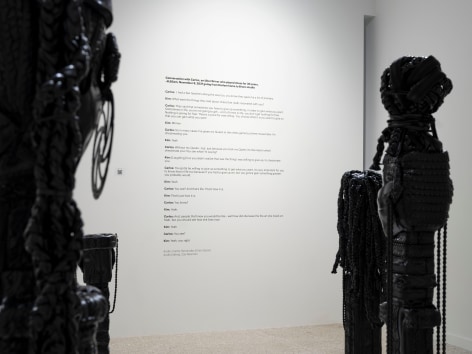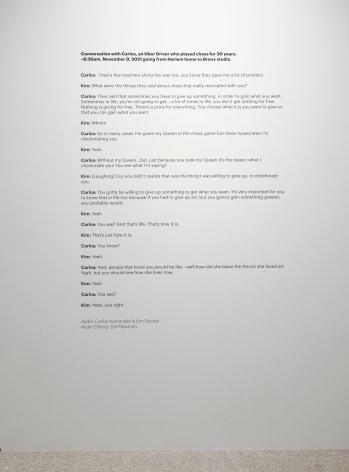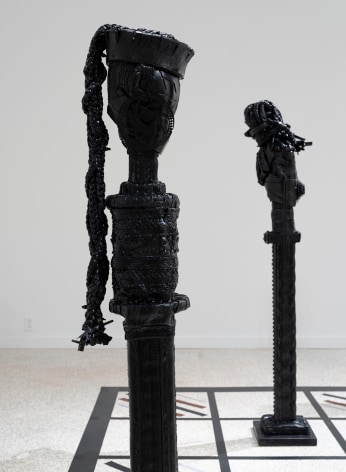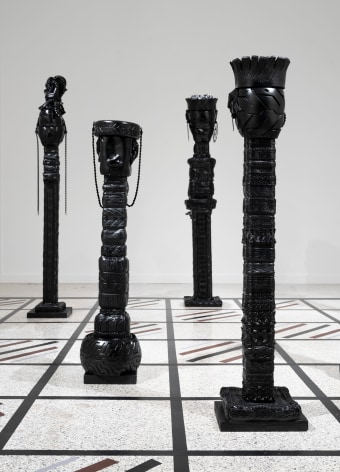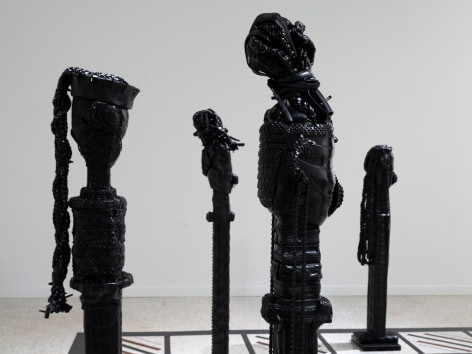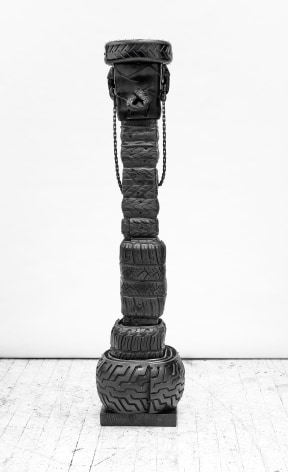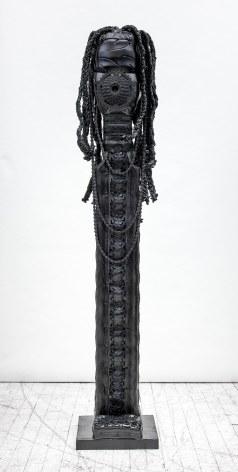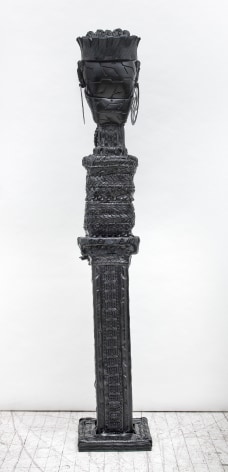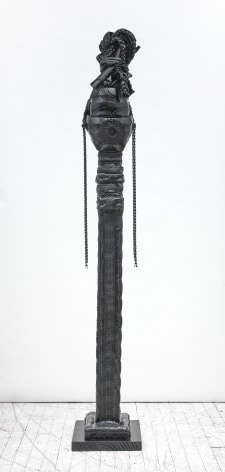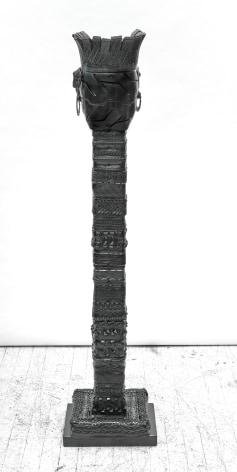Palm Beach - GAVLAK is pleased to present Black Moves First, a solo exhibition of recent sculpture by Jamaican-American artist Kim Dacres, on view from December 1, 2021 – January 2, 2022. Often contemplating themes of reclamation, Dacres is an inspired bricoleur who finds expressive potential in materials at hand, including found bicycle, motorcycle, and automobile tires in New York, which are then ceremoniously knotted, twisted, or hewn by the artist. Through careful imbrication and recontextualization, these rugged surfaces recombined ad infinitum—whether fashioning icons of family, heritage, Blackness, or belonging—wrestle with the weight of self-representation in a system unjustly stacked against Black women.
In the traditional game of chess, Black moves second, not first. Marked by a strategic disadvantage from the onset, Black involuntarily falls into responsive and defensive play. This extended metaphor becomes inverted with Dacres’ exhibition, Black Moves First, which unveils a powerful composition of eight new sculptures that proffer a novel twist on the timeless game of chess, which, in this version, is devoid of kings, pawns, or male signifiers. Instead, the eight women of the Crown family move first with white, the viewer, to respond.
What is clear in Black Moves First is the embodied knowledge that each piece possesses. For the women represented, this is not their first game, nor will it be the last; each piece will become another and new ones will emerge. Dacres' analysis of Blackness and femininity is sharp, explicit and beautifully sentimental. To exist within Dacres' universe, even in transience, is to be unbolted.
The vibrant Blackness of Dacres' installation, contrasted against a notable absence of white chess pieces, opens a poignant mediation on questions of race, ownership, and narrative. Within Dacres' immersive staging, the exhibition's visitors are to become the white opponents that these figures collide with. Transforming the white cube into an arena for gameplay, the artist prompts her audience to analyze this territory, challenging viewers to locate their own positionality within Dacres' story.
Manifested through an enduring material which will retain its Blackness forever, never fading or deteriorating, Dacres gestures towards the inheritance of both struggle and strength, the resilience of her characters being passed down through generations. These surfaces expose the residue of Western sculptural norms via repetitious materialist interventions, reinventing the rules of whiteness by transforming its very playing field.
ABOUT KIM DACRES
Kim Dacres is a first-generation American sculptor of Jamaican descent, who uses found tires and rubber from automobiles and bicycles to create sculptures inspired by people and ideas. The core of Dacres’ process involves collecting, wrapping, reassembling, and disassembling tires; eventually treating these materials with spray paint or enamel. Her sculptures are held together using screws and braiding techniques. In this process of material layering, the rubber is transformed into abstract shapes, evoking muscle, bone, skin, and hair.
Fascinated by the complexities of varied personalities in her community, and the fragments of experience that tend to shape perception, Kim is committed to an ongoing practice of representing everyday people of color—exploring the paradigm of entitlement to space, honorifics and monuments.



